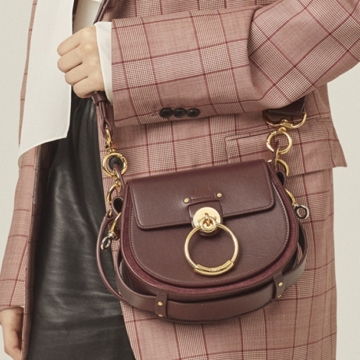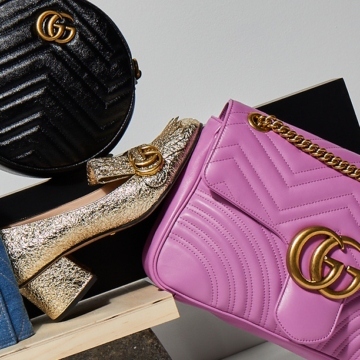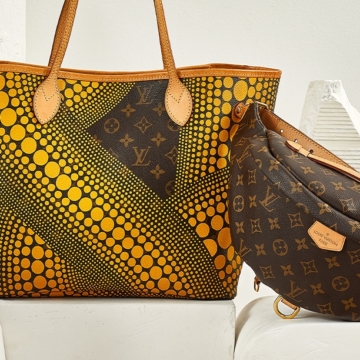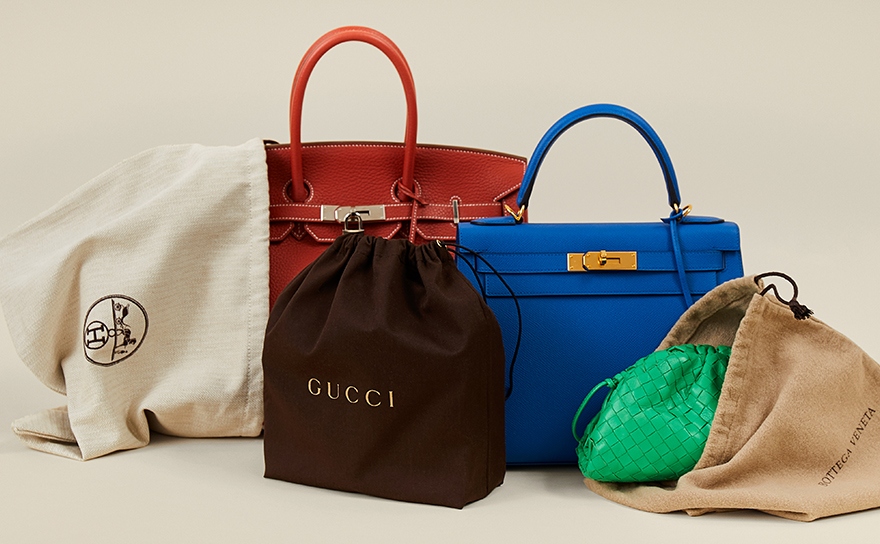
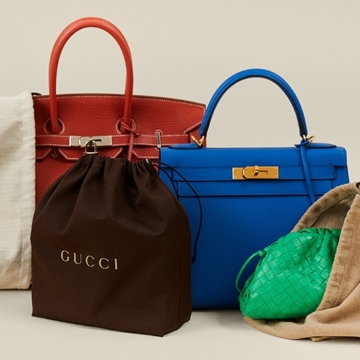
Leather Bag Care: How To Keep Hermès, Gucci & More In Top Resale Condition
Envision the Hermès Birkin, the Fendi Baguette, the Dior Saddle, the Chanel Flap, the Bottega Veneta The Pouch — what do these iconic bags have in common? They’ve all been fabricated with leather, either exclusively or for most of their iterations. What would an Hermès Kelly in Swift leather be without its rich color? Where would the magic of Bottega Veneta’s woven intrecciato bags be if they were made of any other material than leather? Would a Prada Galleria bag have the same chic, no-nonsense appeal if it were not made of hardy, crosshatched saffiano leather?
Aside from being classic luxury staples, leather bags have myriad benefits — versatile, long-lasting, eternally stylish. They’re also investments, and in order to get the most for your money, taking care of them to prolong their lifespan (and second life, if you inevitably sell) is key. Maybe you loved your leather bag in its heyday and it’s time to make room in your collection for something new. Or perhaps you secured the trending It bag, knowing that you’ll tire of it after a handful of wears. So what’s the next step? What can you do to care for your leather bag and then prepare it for the resale market?
Proper leather bag care can prevent the worst from happening and allow you to maximize resale value when you’re selling your bags (to make room for more, naturally). And good news — a leather bag care regimen requires only a modicum of effort to maintain a bag’s physique. TRR Senior Fashion Valuation Manager Jenna Prager gave us the details on primping, polishing and prepping yours for the resale market. Read on… it’s leather bag care made easy.
Leather Bag Care 101: Not All Leathers Are Created Equal(ly Durable)
When it comes to leather bags, we all have a preference — buttery and soft, shiny and solid — but it’s important to remember that your leather bag care will vary depending on the type of leather. “Grained, textured, pebbled and saffiano leathers are the hardiest leather types around,” explains Prager. “These tactile leathers typically hold their shape, easily hide imperfections such as scratches and scuffs and can be spot-cleaned using a dry cloth when needed. A damp Q-tip can also be used to spot-clean, but only as a last resort.”
Also note that the smoother the leather, the more susceptible to damage it will be. “Smooth and patent leathers look beautiful, but tend to scratch easily,” says Prager. “A quick bump walking on the street or a long fingernail can cause immediate damage. Using a soft, dry cloth to attempt to hand-buff these scratches out is your best bet. But before getting to that point, I recommend wearing your smooth leather bag or patent leather bag sporadically, and not every day.”
A Dust Bag Is Your Leather Bag’s Best Friend
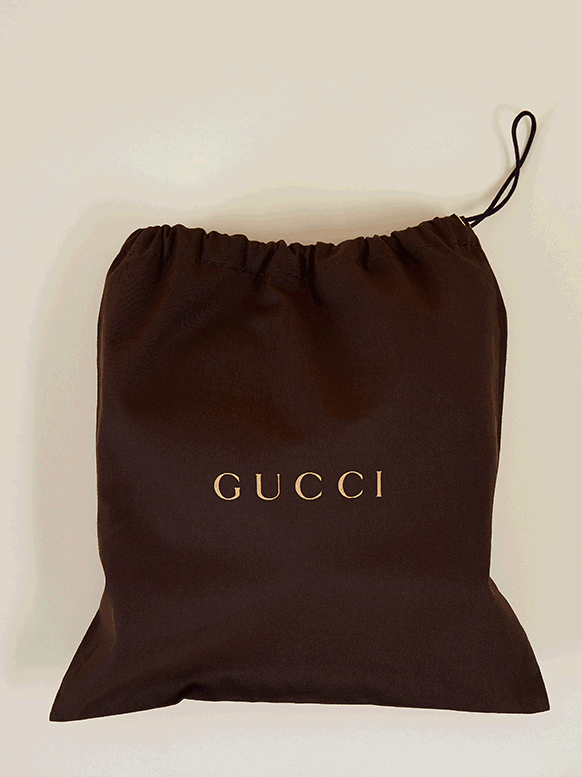
A dust bag is much more than just “the bag your bag comes in,” and is not part of the packaging. Think of your leather bag and its dust bag as best friends — while they don’t spend all of their time together, they love hanging out. If your leather bag is not accompanying you on your daily adventures, it should be stored in its dust bag.
“Keep your leather bag in its original dust bag and box to maintain its condition and shape,” advises Prager. “This will also protect the leather from light and air exposure, which can alter the color and condition of the leather.”
Say No To Chemicals, Conditioners & Household Cleaners
In the spirit of sustainability, it may come as no surprise that you should leave chemicals out of the equation when it comes to cleaning leather bags. “Every leather type varies, and it is best to initially clean your handbag using dry methods, as this may be all it needs,” explains Prager. “Using water or household cleaners and sprays can be too harsh for leather bags, causing discoloration and tarnishing throughout. Avoid using leather waterproof spray, such as those used for shoes, as well as spray-on leather conditioners or moisturizers — these may cause uneven protection for your leather bag. The best practice is to use dry methods, and only employ protectants or conditioners that are recommended by the brand itself.”
Skip The Lotion, Too
Keeping your hands silky smooth with the finest creams and lotions is always a good thing — until you come into contact with your leather bag. “Avoid using hand lotions, hand oils and liquids that may leave marks or stains on a leather bag,” says Prager. “Dry, clean hands will prevent permanent damage. If you do use lotion on your hands, make sure it has completely dried before handling your leather bag.”
Leather Accents Need Some TLC
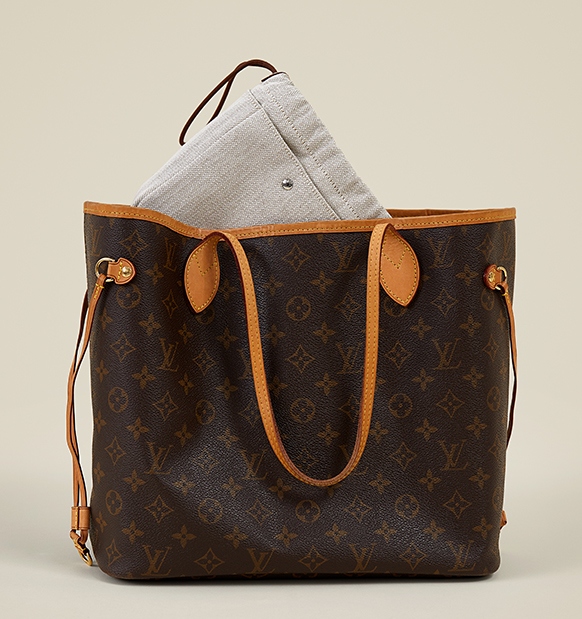
If you’re wondering about that leather trim on your coated canvas Louis Vuitton, Dior and MCM bags, the answer is yes — it can be cleaned, but it must be done delicately. “Leather accents should always be handled with care, and never touched up using shoe polish, nail polish or paper correction fluid,” says Prager. “Spot-clean any leather trim with a dry cloth. On Louis Vuitton bags, the leather Vachetta trim will darken and develop a patina over time. This look is desired by many LV fans and is caused from the oil on your hands. It is important not to spot-clean Vachetta, as this will leave watermarks and an uneven tone. However, Louis Vuitton can replace any Vachetta trim and bring new life to even your oldest handbag.”
Your Leather Bag Needs A Bag
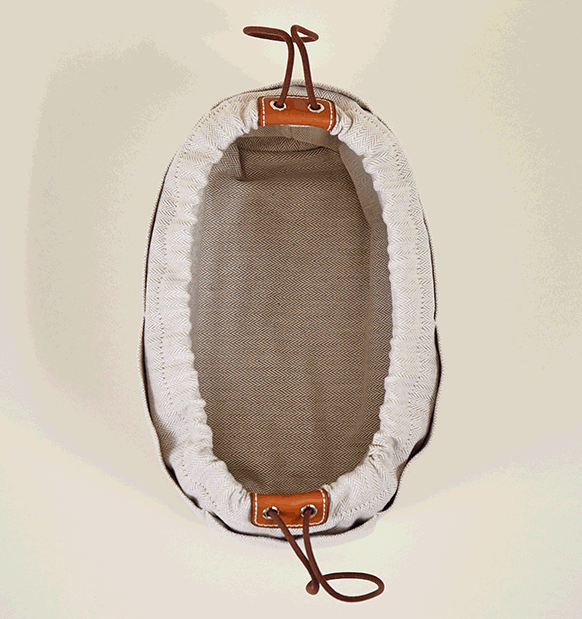
What’s the best way to keep the inside of your bag stain, mark and spill-free? Never put anything inside of it (we joke!). If you peek inside anyone’s tote on an average day, you’re bound to find anything and everything — snacks, today’s lunch, a fresh fountain pen, a water bottle, hand sanitizer… and unfortunately accidents happen, which is why the best course of action is to get a pouch to keep the contents of your bag safe.
“Use a pouch or handbag insert to protect the interior lining of your bag from stains, pen marks, indentations, rips, et cetera,” says Prager. “Make sure the insert has a drawstring or zip closure. Your pouch or insert will bear the brunt of any damage instead of your leather bag, preserving the interior.”
Yes, Even Leather Bags Need Outerwear

There’s nothing worse than getting caught in the rain without an umbrella or raincoat, especially if you have one of your favorite leather bags in tow. Many Hermès bags in the primary market (and some in the resale market) come with their own rain jackets. And if you want to maximize your leather bag’s resale value, put that handbag rain jacket to good use (or invest in one ASAP).
“Using a rain jacket for your leather bag is essential to protect against harmful conditions such as rain, snow, food, mud, puddles, wet paint… anything you can think of,” notes Prager. “This will allow you to enjoy your handbag daily, but maintain the leather and keep it in top resale condition.”
A Good Accessory Is The Best Defense
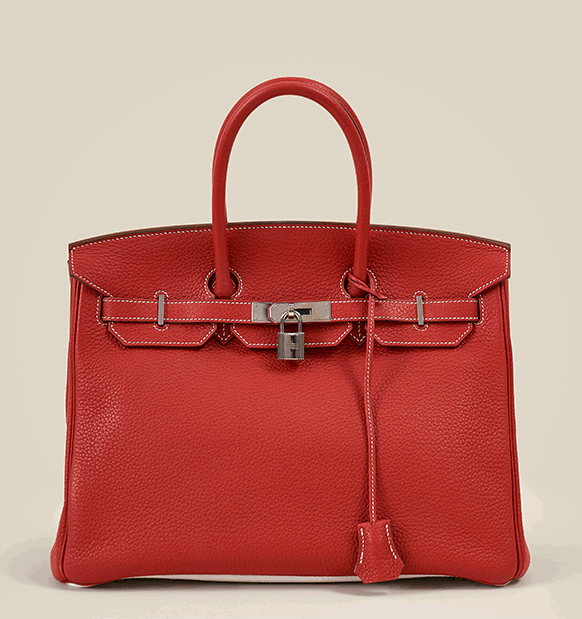
Leather bag handles and straps are, unsurprisingly, prone to wear (when was the last time you picked your Birkin up by its base?). With that in mind, Prager advises to get a little creative in order to combat any potential damage. “Use a scarf to protect the handle or strap of your leather bag,” suggests Prager. “It will prevent staining and oil transfer, and will keep your handle looking brand new.”
Start by securing the scarf at the base of the handle on one side. Tie a knot to keep it in place. Then wrap the scarf around the handle or strap — doubling it up if necessary depending on handle length — and knotting it to mirror the first knot. If wrapping a scarf around a longer strap, make sure to keep the knots taut so it will not move, and to align the scarf with the section that rests on your shoulder. “And if you want to keep the scarf, don’t forget to remove it before consigning your bag,” adds Prager.
Pamper Your Leather Bag With A Spa Day
Is your handbag still looking tired? Is it working long hours and getting home late? After putting all of our leather bag care tips into practice, is it still in need of a little rest and relaxation? Give it the undivided attention and care of a specialist. “Send your handbag on a spa day,” says Prager. “Handbag spas will freshen up the corners, handles, straps, hardware and interior of your leather bag. The key to maximizing resale value is care. Leather Spa in Manhattan is highly recommended by many boutiques and department stores. Visit your local leather shoe repair shop and see if they can give your bag the care it deserves.” If you’re in the San Francisco Bay Area, stop by our San Francisco store to take advantage of our expert handbag care and repair services.
Once you find your local spa or repair shop, don’t just drop your bag off — it’s essential to make sure you and the specialist are on the same page. “Discuss what cleansers will be used on your item, and if any additional work will be needed,” notes Prager. “And remember — any replacement work or alterations should be done by the brand itself to ensure that the quality is up to their house standards.”
Wear, Care, Consign
So you’ve polished your bags to perfection. Your collection looks better than it has in years, but you’ve been eyeing something new and need to make space for it. Luckily, if you choose to consign your bag, going the extra mile to care for it can result in a fast sale and higher commission payout. “Women’s bags in pristine condition (with tags, no signs of wear) and in excellent condition (without tags, no signs of wear) sell 15% faster than bags in very good or good condition,” notes TRR Associate Merchandising Manager Kelly McSweeney. “They’re also priced up to 25% higher.” Well-cared-for men’s bags garner similar results. “Pristine and excellent-condition men’s bags sell 10-15% faster than bags in very good or good condition, and are also priced 25% higher,” says TRR Senior Men’s Merchandising Manager Aaron McWilliams. Now, the only question that remains… which one will you consign first?
Got a handle on leather bag care? Sell your bags with us.


